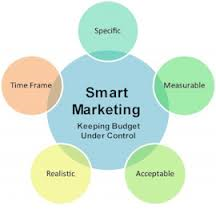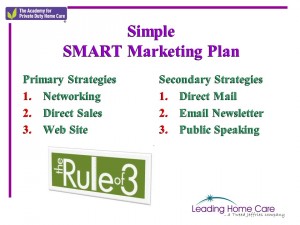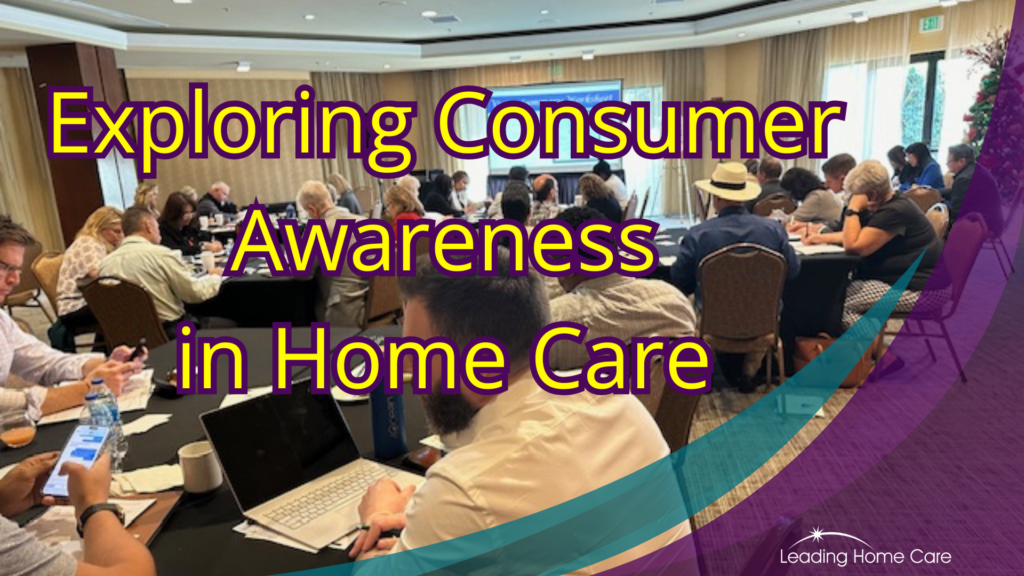By Stephen Tweed
A Smart Marketing Budget is one of most important things you can do to grow your company.
So Why Are So Many Home Care Businesses Scared of It?
The owner of a growing home care business recently called me to ask about the services of Leading Home Care. He said he was ready to take his business to the “next level.” I asked him what that meant. He said his company had been growing for several years and then hit a plateau. It’s what I call “The Growth Ceiling.” It’s very common in home care, and hits at about 1500 hours per week.
I asked him what his vision was for his company in five years. How many hours a week do you want to bill? What do you want your role to be? What do you want your life style to be? How can your company be the vehicle to create the life style you want?
Now the conversation was beginning to get productive, because we were talking about a clear vision and more well-defined goals. But all that came to a screeching halt the moment I mentioned that evil word: budget. Budget is a word that most small business owners hate to hear. Even executives at some midsize companies squirm when they hear “What is your marketing budget?”
How can a business run without a marketing budget? There is a mentality out there that if you have a budget you will end up just wasting it, because once you define how much money you are going to spend, it’s as if you had already spent it. But that couldn’t be further than the truth.
What is a SMART Budget?
You may have heard me talk about setting SMART Goals. SMART Goals are specific, measurable, achievable, relevant, and time based.
A SMART Budget has those same elements:
- Specific – you want to identify each of the elements of your marketing plan, and determine how much you will spend on that element each month of the year.
- Measurable – you want to measure your ROI – Return on Investment – for each of your marketing activities. That means tracking every phone call that comes in to your office and recording the source of that call. Where did the caller find out about your company? How many new clients did you get from each marketing strategy, and what is the dollar value per client?
- Achievable – you want to have goals, action plans and a budget that are based on reality. You can’t set a goal to grow your business by 100% next year but only budget 1% of revenue for marketing. What is reasonable based on national industry benchmarks?
- Realistic – you want your marketing budget to reflect the proportion of your time, talent, and treasures that will be spent on each element of your marketing plan. You want to put you money in to marketing strategies that have been proven to be most effective.
- Time Based – you want to build a spread sheet showing each month of the year, the marketing activities for each month, and how much you will spend on each activity each month.
What are you currently paying to play?
How much are you now spending on marketing? How many new clients are coming in from your outbound marketing effort? What is your marketing cost per new client?
 According to the 2014 Private Duty Benchmarking Study from Home Care Pulse, the median sized home care company spent just 1.1% of revenue on marketing. The median sized company billed about 1300 hours per week and generated $1,398,090 in revenue. The median cost to acquire one new client was $478.57. That’s up from $331.43 in 2012.
According to the 2014 Private Duty Benchmarking Study from Home Care Pulse, the median sized home care company spent just 1.1% of revenue on marketing. The median sized company billed about 1300 hours per week and generated $1,398,090 in revenue. The median cost to acquire one new client was $478.57. That’s up from $331.43 in 2012.
The leading companies in our industry – those that generated two million dollars or more in revenue – spent 1.7% of their revenue. The leading companies had a median annual revenue of $3,082.182 and their cost per new client was $501.07.
How fast can I afford to grow?
Once you are clear about your growth goals, then you can make some decisions about how much you want to spend on marketing, and how you will allocate those costs. Let’s say your goal is to grow your business by 20%. If you are a median sized company, you generated $1.3 million last year and you want to grow to $1.68 million this year.
According to the industry data, the typical home care client brings in $11,000 with an average length of stay of 12 months. So that’s about $917 per month, or nearly 46 hours of care.
In order to add $380,000 of new revenue, you will need to bring in about 35 new clients, in addition to replacing any clients who go off service (we call this attrition).
If you would like to discuss doing this exercise for your business, feel free to give me a call. I actually enjoy figuring this out. To bring in those 35 new clients you will need to spend $16,750 on marketing. That’s about 1% of your revenue. However, you also need to replace the clients that left your service through attrition. Let’s say that’s another 25 clients. That’s another $11,964 for marketing. Now the good news is, you will get some new clients and replacement clients through word-of-mouth, employee referrals, and relationships with existing referral sources.
So let’s say you decide you can spend $25,000 on marketing this coming year. That will be 1.5% of your revenue goal. If all your marketing works and you get a good ROI, you’ll be in great shape.
Allocating Your Marketing Dollars
The problem with marketing budgets is that there is never enough money to go around to all of your marketing projects. That’s why we guide our clients to set up a SMART  Marketing Strategy. It consists of three primary and three secondary marketing methods.
Marketing Strategy. It consists of three primary and three secondary marketing methods.
For example, you three primary methods might be networking in the community, making direct sales calls to referral sources, and your web site. Your secondary strategies might be an email newsletter, direct mail to referral sources, and public speaking. How much money will you allocate to each activity? How much will you spend each month?
Repetition and Consistency are the Keys
To make your marketing budget pay off, you need to develop the discipline to build your plan and your budget for the year. Then you need to take action and implement the plan each month. And you need to track every call that comes in and every new client you admit, and connect them back to your specific marketing activities. Then you need to keep doing what works, and stop doing what doesn’t work.
Marketing is all about testing. You need to test marketing methods, marketing messages, and marketing frequency. You need to track all of the changes in order to determine what’s working and what’s not.
It all begins with the basics; a clear marketing strategy, a clear marketing plan, and a SMART marketing budget. If you need help with that, give me a call and let’s talk. I love talking about marketing and digging into the details. Call 502-339-0653 and ask for Terre Bryant. Terre can set up a time for us to talk. I’ll look forward to it.




